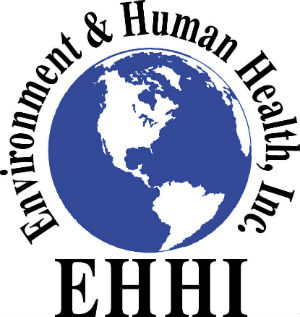Artificial Turf: State Underplays Dangers
By Nancy Alderman, Environment and Human Health Inc. and David Brown, public health toxicologist
The Connecticut Department of Health took the position that synthetic turf fields were safe years before they, or anyone else, had tested them.
In 2006 Environment and Human Health Inc. took a small sample of the crumb rubber that was being put in the fields and had it tested at the Connecticut Agricultural Experiment Station. That sample came back containing enough toxins that EHHI asked for a moratorium on the installation of any new synthetic turf fields until more was known. At that time there were very few synthetic fields in Connecticut.
At that point, the health department could have agreed that more testing was needed. Instead they would not support our request. Synthetic fields were subsequently installed. The department's conclusions were based on industries' marketing assurances and the Environmental Protection Agency's waste tire disposal policies, which promoted the shredding of tires and putting them in places where students and children play.
Later, in 2010, the department took part in a state study of a few Connecticut fields that were tested during a mild summer. It then asserted that there was a slight but acceptable health risk. That conclusion was based on the inhalation of vapors from monitors placed on a few adults kicking a ball around five fields. Ingestion and inhalation of the dust from the fields were omitted.
Having only a few adults on the field being monitored for toxic exposures is no match for having teams of soccer players on a field. And what about the exposures to a team of small children? What about the exposures to students on hot days when the fields reach 160 degrees? Additionally, there was no effort to determine the exposures to the soccer goalkeepers, who are the most heavily exposed people on a soccer team.
When the study was completed, the state health department stated "that there was a slight risk"; however, the report's reviewer said the data was not strong enough to scare people or to have the towns and schools bear the costs of removing their fields. So "a slight risk" was changed to "no risk."
The health department remains unwilling to admit - as the EPA and Consumer Product Safety Commission now have - that perhaps there are health issues with synthetic turf fields and we need to know more.
Meanwhile, the cases of cancer continue to climb. There are now 203 athletes who have played on synthetic turf and reported their cancers to Amy Griffin, the assistant women's soccer coach at the University of Washington. Of those 203 cases, 159 are soccer players; of those, 97 are goalkeepers - the most heavily exposed.
While the health department continues to assure everyone that the fields are safe, Yale University found 12 carcinogens and 20 irritants in the material; the Empire State Consumer Project found arsenic, cadmium, and zinc at "higher than current acceptable limits"; and an academic study from the University of Sienna in Italy concluded that synthetic turf fields were a public health hazard.
This has become both a financial and toxic exposure tragedy for schools, towns and students. The state has given out $11 million to towns across Connecticut to install these fields - and all this in a time of serious budget deficits.
